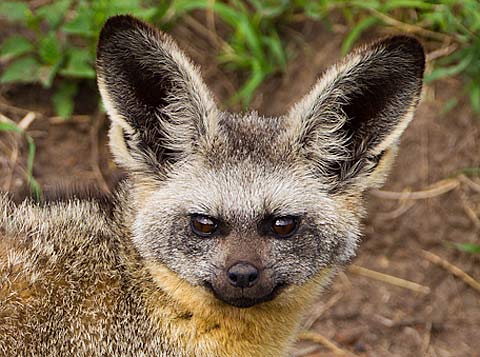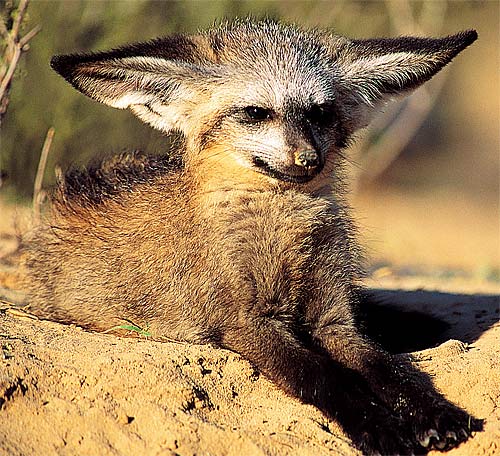Bat-Eared Fox – Listens for Termites and Critters

A canid native to the savannahs of Zambia, Angola, South Africa, Ethiopia, Sudan, and Tanzania, the bat-eared fox gets its name from its large ears, and is known for being around in some form for over 800,000 years. Also known as the big-eared fox, black-eared fox, and Delande’s fox; it has black ears and tawny fur, and grows to about 1.5 feet (55 centimeters) long with ears that are about 5 inches (13 centimeters) high off its head.

These canids can usually be found in the short grasslands of their regions, living in self-dug dens that they use to raise their young and find shelter from extreme temperatures and winds. On the subject of raising their young, males do the majority of the child rearing within their predominantly monogamous relationships. The female will gestate for 60-70 days before giving birth to a litter that consists of 1 to 6 puppies. After about 15 weeks of lactating the female turns the reins over to the male, who takes charge of the grooming, defending, huddling, chaperoning, and transportation duties.


The bat-eared fox is an insectivore, with 80-90 percent of its diet coming in the form of harvester termites. The rest of the diet consists of ants, beetles, crickets, grasshoppers, millipedes, and even scorpions and spiders. If need be, it will ingest small birds, small mammals, and small reptiles. They don’t need much water since they’re used to surviving in the desert, and get most of the moisture they need from their food. Bat-eared foxes hunt using their large ears to hear their prey and are efficient hunters. They are listed as being of “least concern” by conservationists, so the species is going strong.

